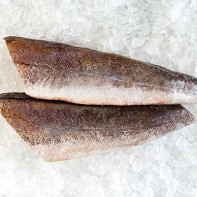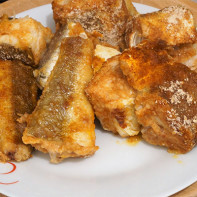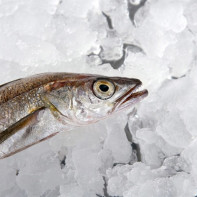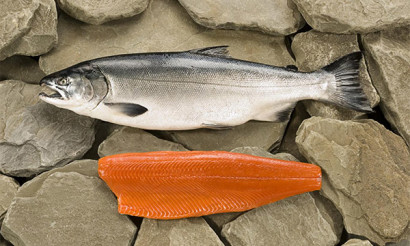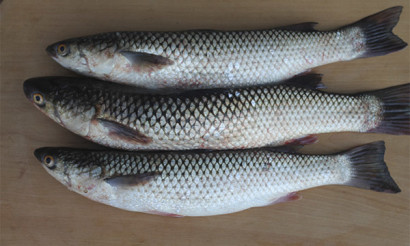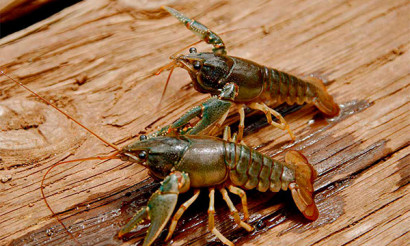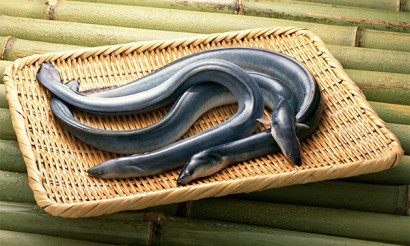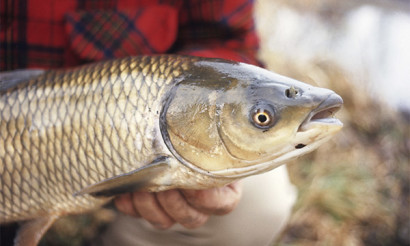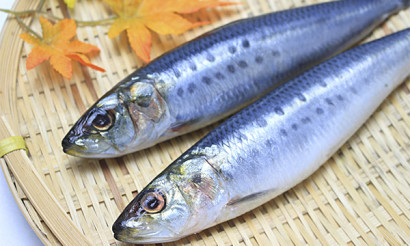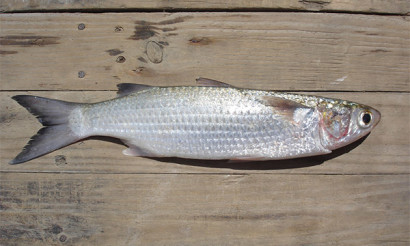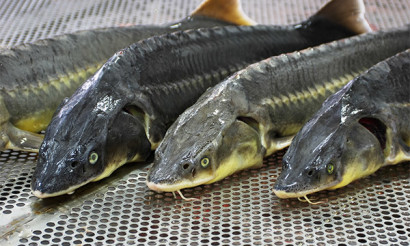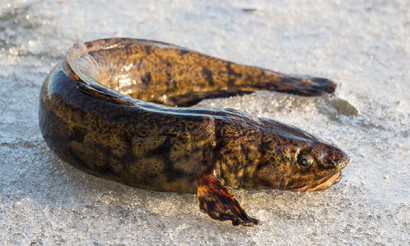Fish hake: health benefits and harms
Hake - sea and ocean fish, one of the most famous representatives of the Treskov family. There is another name - hake, while some people take them for a different kind of fish.
- How does a hack look and where
- Kinds
- What is the difference between hake and pollock
- Composition and calorie content
- Useful properties of hake fish
- General benefit
- For women
- For men
- During pregnancy
- When breastfeeding
- For kids
- When losing weight
- With pancreatitis
- With gastritis
- With gout
- Harm and contraindications
- How to choose and store
- How to cook fish before cooking
- How to cook hake fish deliciously: recipes
- In the oven
- In the pan
- In a slow cooker
- Grilled
- On the grill
- How to pickle
- How to smoke
- What can be made from hake: recipes
- Cutlets
- Soup
- Salad
- Interesting Facts
How does a hack look and where
The hake grows to a length of 70 cm in length, individuals up to 1.5 m are found. Weight - up to 3 kg. The body is elongated, with two dorsal fins of different lengths. The head can occupy up to a third of the entire carcass. Heka exudes a wide mouth with a protruding lower jaw and large round eyes. The back of the fish is dark gray, the belly is silver. The meat is snow-white or milky.
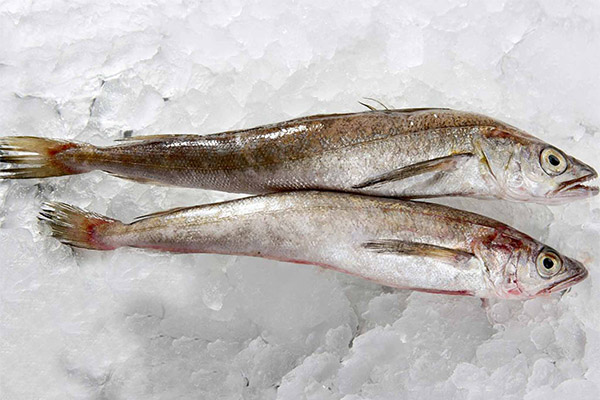
Hake inhabits the coastal depths on both sides of the Atlantic Ocean. A huge population lives in the Pacific Ocean. The body of the fish is not afraid of a lot of pressure, so it feels comfortable at an incredible depth for a person - up to one kilometer. Sometimes it enters rivers flowing into the seas and oceans.
Kinds
Depending on the habitat, 16 species of hake are distinguished. The most common ones are:
- Pacific;
- New Zealand
- silver (found off the coast of North America);
- Argentinean
- European (caught off the coast of the northern countries of Europe);
- Chilean;
- Cape (South West Africa).
In Russia, the Pacific variety is most popular. Fish grown in nurseries more often goes on sale.
What is the difference between hake and pollock
Pollock also belongs to the Treskov family, so it is easy to confuse it with a more expensive hake, which is sometimes used by unscrupulous sellers.
Externally, the fish differ from each other in shape and color. The body of pollock is wider in the region of the head and narrower in the tail. Hake scales have a smooth gray gradient from a dark shade on the back to silver on the belly, while the sides of pollock are dotted with spots.
From a culinary point of view, a hake is easier to prepare, easier to cut and less to fall apart when stewing and frying. It is also juicier, more nutritious and healthier. Pollock has only two main advantages: a more affordable price and a vitamin-rich liver, which is considered a delicacy.
Composition and calorie content
Merlot is rich in vitamins, micro and macro elements and other vital substances. It includes:
- B vitamins;
- potassium (K);
- calcium (Ca);
- iron (Fe);
- vitamin A;
- Manganese (Mn);
- cobalt (Co);
- phosphorus (P);
- copper (Cu);
- zinc (Zn);
- Vitamin C
- molybdenum (Mo);
- iodine (I);
- vitamin PP;
- magnesium (Mg);
- sulfur (S);
- omega 3;
- fluorine (F);
- proteins;
- sodium (Na).
The number of calories depends on the type of hake, the fishing season, and also on the cooking method. The usual rate is approximately 87–90 kcal per 100 g of product. When cooking, calories change:
- after frying - 105 kcal;
- after cooking - 95 kcal;
- after baking - 94 kcal.
Useful properties of hake fish

General benefit
The usefulness of this marine life is difficult to overestimate. It has a positive effect:
- the level of glucose (sugar) in the blood;
- vision;
- metabolism;
- hormone levels;
- immunity;
- nervous system;
- cardiovascular system;
- cholesterol level;
- thyroid gland;
- cardiovascular system;
- memory;
- body tone;
- digestion.
Hyuk eliminates inflammation and harmful bacteria and is used to treat and prevent disease. Such a useful product should be included in the diet of those who are stressed or work physically.
For women
Hake is very useful for women's health, fights hormonal disruptions and supports the body during pregnancy and during breastfeeding.
For men
The marine predator is also necessary for the male body. Protein helps to increase and strengthen muscle mass, especially important for athletes and bodybuilders.
During pregnancy
Pregnant women should use hake to the best of their ability. Beneficial substances protect the health of the expectant mother and her baby, protect against infections, contribute to gestation and help to transfer the consequences of childbirth easier. Calcium and phosphorus strengthen the bones, hair and nails, which often suffer during pregnancy, and also lay the intellectual potential of the baby.
When breastfeeding
According to the recommendations of pediatricians and breastfeeding specialists, lactating women should eat cod 1-2 times a week. The beneficial properties of this product will not only affect the mother's body, but also through the milk will be transmitted to the baby.
For kids
Hake can be introduced into the lure of a child from the age of one. Vitamins and minerals included in fish meat will strengthen children's immunity, contribute to growth and intellectual development.
This is an indispensable product for schoolchildren and students, especially during periods of stress and increased mental activity. Beneficially acting on the nervous system, it helps children and adolescents to better adapt to the new environment, the team, it is easier to endure the excitement during the exam period.
When losing weight
This kind of cod is great for a low-carb diet. Low-fat fish is perfect for diet recipes and is very popular among adherents of a healthy lifestyle.
Due to the low level of carbohydrates, hake allows slimming people to eat fillings and at the same time not to gain excess weight. There are fish diets in which cod are included in the daily diet or even the only product that can be consumed for several days. The main thing is the correct way of cooking. Even a diet hake, when fried in a large amount of oil, is unlikely to contribute to effective weight loss.
With pancreatitis
Merlusa is one of the few foods you can eat with a serious illness such as pancreatitis. Fish for the patient must be boiled, stewed or steamed. Other methods, such as frying, smoking, salting and even baking, will have to be excluded. Fish stock and fish-based soups are also banned.
With gastritis
Thanks to the light protein, hake is recommended even for people with chronic gastritis. In the period of exacerbation, even such simple and easily digestible food will have to be abandoned, however, outside the exacerbation, patients can treat themselves to a boiled or stewed hake. In salted, smoked and fried form, such a product is strictly prohibited. It is acceptable to bake a fish in foil without oil or steam it. It is important not to abuse salt and seasonings.
With gout
Boiled and steam hake may also be part of the diet for gouty arthritis. It is allowed to use it no more than 2-3 times a week.
Harm and contraindications
Even a useful product like hake has its drawbacks. The list of contraindications is quite limited, but it should be considered by all people with poor health:
- Hyuk is contraindicated in case of individual intolerance and allergy to fish.
- Like any iron-containing product, hake can cause constipation.
- Helminths may be hidden in raw meat. Exotic raw fish dishes, such as sushi and rolls, can be dangerous, especially for pregnant women and young children.
- Due to catastrophic environmental problems, the seas and oceans are heavily polluted with chemicals and nuclear waste. Fish, including codfish, can absorb harmful substances. It is recommended to buy hake grown in special artificial reservoirs.
- Even with the most careful processing, small bones may remain in the fillet, so you should be careful when feeding small children.
- It is advisable to take products from a trusted brand and from reliable sellers. Some manufacturers abuse synthetic drugs when processing fish carcasses.
How to choose and store
In stores, hake is most often sold frozen. As a rule, this is a carcass without a massive head and a tail fin. You can also buy fillets, steaks, minced meat and all kinds of semi-finished meat from hake.
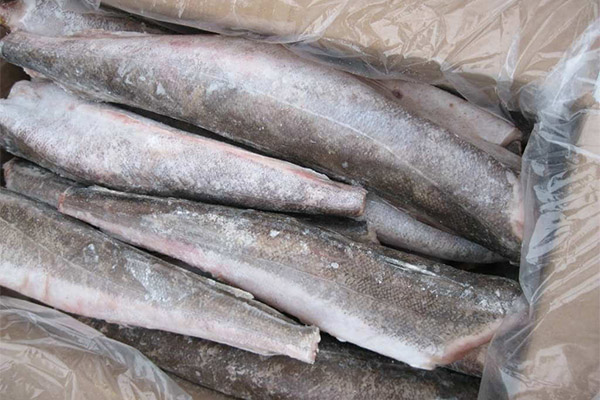
When buying frozen fish, you need to pay attention to the following points:
- There should not be a lot of ice on the skin.
- Outside, the fish is clean, without blood stains.
- When you click on the abdomen there are no traces.
- Size corresponds to weight (insufficient weight indicates long-term freezing, excess indicates repeated).
- The surface is smooth, undamaged.
- The carcass should not be unnaturally twisted.
- Good meat is white, if there is a yellowish tinge, this means that the fish began to deteriorate.
Quality fresh fish has:
- pleasant fishy smell without impurities of mud or chemistry;
- smooth skin, without lacerations and strange spots;
- red gills (any deviations in color indicate low-quality freezing);
- clean, clear eyes;
- dense structure.
Frozen carcasses can be stored in the freezer for up to 6 months. With longer storage, the meat will become frostbitten, dry and tasteless. After defrosting, the fish must not be re-frozen, as it will lose its dense structure and delicate taste.
It is advisable to prepare a fresh hake on the day of purchase or store in the refrigerator in a separate bowl for no more than 24 hours.
How to cook fish before cooking
Before cooking, melrose must be thawed. This must be done, observing some rules.
The most gentle is natural defrosting in the refrigerator or at room temperature. To do this, it is enough to get food out of the freezer, put in a deep container (so that the melted water flows down there) and put in the refrigerator for several hours. You can do all the manipulations in the evening, and in the morning proceed to cooking.
If you need a quick defrost, you can use one of the proven methods. The first way is to send the ice product into the microwave and turn on the Defrost mode. The second is to defrost in a bag under running water.
For the second option, you need to put the fish carcass in a bag, remove all the air, as far as possible, put the bag in a bowl, put in the sink and open the tap. Cold water should fall in a thin stream into a bowl. Important: the water should not be icy, otherwise the defrosting process will be delayed, and in no case hot. If you place a frozen hake in hot water, then the upper layers of meat will quickly defrost and cook, while the insides will still be hard. Such a fish will become unsuitable for cooking and simply fall apart in a pan.
Thawed or fresh fish must be cut as follows:
- Wash thoroughly with clean water.
- Clean the scales from the tip of the tail to the head.
- Cut off all the fins. Separate the head.
- If the head is needed in cooking, free it from the gills and rinse gently, avoiding sharp teeth.
- To tear up the belly, pull out the insides, rinse.
- With a knife, remove the dark film from the inner walls of the abdomen.
- Wash the whole carcass again.
- Allow excess fluid to drain or pat the skin with a dry towel.
In the future, the fish can be divided into steaks or fillets. Thinning is best done with a special thin knife. Cutting takes place in several steps:
- Pre-clean and gut the fish, cut off the fins and head.
- Use a sharp knife to make two parallel cuts on the back. The incisions should be deep and reach to the ridge.
- Put the fish on its side and with a careful movement from the tail to the head cut off an even layer of meat, separating it from large bones.
- Turn the carcass over and similarly separate the fillet from the second side.
- Carefully examine and feel both fillets for smaller bones. Remove all bones with your hands or tweezers.
- Rinse the prepared meat with clean running water.
Before cooking the hake, it is advisable to marinate.To do this, you need to take a whole carcass or steaks, salt, add spices to taste and lemon juice. Leave to "rest" 10-15 minutes. From seasonings are best combined with cod:
- dill;
- tarragon;
- marjoram;
- parsley;
- thyme;
- cloves;
- rosemary;
- ground black pepper;
- caraway;
- fennel;
- Lavrushka
- cardamom;
- Melissa.
Merlouise is a universal product in terms of compatibility with side dishes, it can be served with cereals, cereals, vegetable stews and mashed potatoes, pasta and salads. The main principle of a harmonious combination is that the components must be prepared in different ways. For example, fried is best served with boiled or stewed. All kinds of sauces, especially cooked with white wine, are also perfect.
How to cook hake fish deliciously: recipes
Caring housewives can always please their loved ones with a variety of hake dishes. There are so many recipes with hake that you can cook a new dish every day and enjoy its taste.
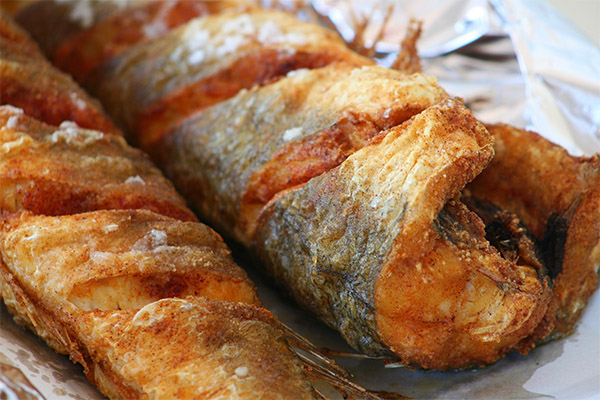
In the oven
One of the easiest and quickest options to make a delicious dinner is to bake a hake in the oven. You can bake immediately with a side dish, in sauce or alone with a small amount of seasoning.
In order to get a satisfying and aromatic dish without unnecessary trouble, just bake the fish. For this purpose, take fillet, steaks or carcass cut in several places. The meat is washed, slightly dried, salted and sprinkled with spices to taste. Then leave to marinate for 10-15 minutes. The oven is heated to 180 °, the hake is flavored with lemon juice or covered with slices of lemon and sent to bake for half an hour. To make the fish juicy, it is wrapped in food foil.
In the pan
For simple frying, take the whole carcass, slightly defrost (only the skin so that the pieces do not fall apart during cooking), cut into steaks. The pieces are sprinkled with flour or dipped in a beaten yolk, added and fried in oil until golden brown. Thick steaks are fried for 6-8 minutes on both sides, for small enough 3 minutes on one side.
In a slow cooker
The latest appliances give room for imagination. The device can steam, cook and stew almost any fish dishes.
For fish stew with vegetables you need:
- Wash and clean the hake. Divide the carcass into equal pieces.
- Salt, add seasoning to taste and leave the pieces to marinate for at least 15 minutes.
- Peel and chop the onion. Wash, peel and grind carrots.
- In a slow cooker, fry the onions and carrots.
- Add sliced tomato or two tablespoons of tomato paste to the frying. Boil.
- Roll pickled pieces in flour. Fry until golden brown separately from vegetables.
- Put the vegetable fill on top.
- Simmer for 10 minutes with the lid closed in the "Extinguishing" mode.
The best method is steaming. Water vapor exposes the product to the necessary heat treatment, kills harmful bacteria, while preserving all the beneficial properties to the maximum.
For steam fish you will need:
- Cut the washed and cleaned carcass into circles, dry with a paper towel.
- Salt and spice each circle.
- Pour 1–1.5 liters of pure water into the slow cooker, add the lavrushka and 5–6 peas of black pepper.
- Place the fish on a special grill. Activate the “Steam” mode.
- Leave to cook for 25-30 minutes. If desired, you can add a taste of lemon juice.
Grilled
The picnic does not have to be meat - hake is also great for grilling. You can fry both individual steaks and the whole fish, directly on the wire rack or wrapped in foil.
Clean, dry fish is pickled in seasonings, salt and lemon, coated with any vegetable oil and wrapped tightly in cling film. The resulting bundle is put in the refrigerator for half an hour to pickle.The grate is placed over well-burned coals, “convolutions” are laid out on top and fried for 15–20 minutes (depending on the size of the pieces), constantly turning over.
On the grill
A hack can make a wonderful fish kebab. Pieces of meat are marinated in advance, put on skewers along with slices of vegetables and fried over coals. The fish is cooked very quickly, it only takes a few minutes to roast.
Instead of skewers, you can use the grill. Pieces or whole carcasses are pickled in spices and salt for several hours, wrapped in foil and spread on a wire rack. Fish in foil can simply be put in coals.
How to pickle
Skillful housewives can make a wonderful preparation for the winter. For pickling you need:
- Choose a clean, deep ceramic or glass dish.
- Prepare 1.2 kg of fillet peeled from all seeds.
- Cover the bottom of the dishes with meat and sprinkle with onions (can be cut into large rings or small pieces).
- Boil 200-300 ml of water in a separate small saucepan.
- Throw 1-2 tsp into boiling water. coriander and dill seeds, 9–10 peas of pepper, cook for 15–20 minutes.
- At the end, add 200 g of sugar, put 5 sheets of parsley, pour 100 g of salt.
- Cool the liquid, add 9% vinegar (not more than 400 ml), add 400 ml of boiled water at room temperature.
- Pour the finished marinade into the dishes with hake, place a lid with cargo on top.
- Put the dishes in the refrigerator or cold place for 72 hours. Stir in the morning and evening for uniform salting.
How to smoke
Smokehouse owners are unlikely to deny themselves the pleasure of making smoked hake. Due to its low fat content, this marine predator is more beneficial than many other fish species.
The fish is prepared in the usual way, eliminating scales, heads and fins. Peel the skin with spices, pepper and coarse salt and for 3 hours put under the load, after sprinkling with lavrushka. In the smokehouse lay the branches of your favorite plants. The hake is laid out on a wire rack and placed over hot coals. On average, smoking takes 40 minutes. Small pieces are ready in 20 minutes. A variety of trees and shrubs are used for the smokehouse: pear, apple tree, currant, spruce, alder and even ordinary black tea (gives a golden hue). It all depends on the taste and imagination of the smoker.
What can be made from hake: recipes
Hake fillet and minced meat are perfect for a wide variety of dishes and home-cooked foods.
Cutlets
For cutlets, you can buy ready-made minced meat or cook it yourself. Be sure to keep in mind that in the purchased fish mass, as a rule, a lot of water is frozen, which must be squeezed out after defrosting.
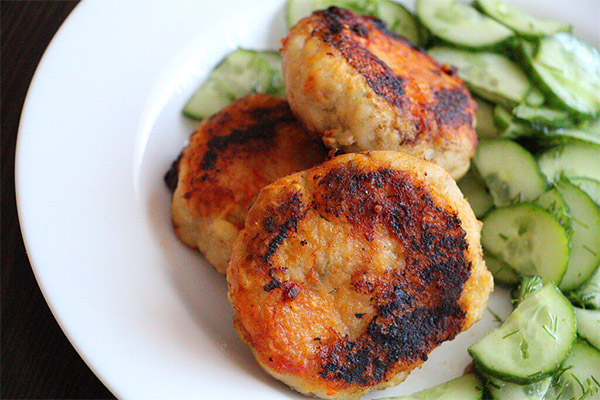
To prepare the minced meat, take the whole carcass or fillet, thoroughly wash, dry and remove all the bones and skin. The meat together with the onion is twisted through a meat grinder or chopped in a blender. An egg is driven into the minced meat, salt, pepper, seasonings for fish dishes are added. All mix thoroughly. Small balls are rolled up from the finished mass, crushed them, roll in flour and fry on both sides in vegetable oil until golden brown.
Fasting can replace the egg with 2 tbsp. starch.
You can add variety to your menu by replacing the usual classic cutlets with a dish in the manner of an Arabian kebab. This will require: 550-600 g hake, 1 whole onion (onion), ½ purple onion, 2 tbsp. oatmeal or oatmeal, 100 g of certified white bread, 40 g of milk, 1 tbsp. mayonnaise or sour cream (at least 20% fat), a bunch of any herbs (fresh dill, parsley), salt, ground pepper, spices (optional).
Process:
- Rinse the merlose, free from scales and bones. Separate the fillet from the ridge and bones.
- Soak slices of wheat bread in milk until soft. Wring out.
- Peel onions, chop into quarters.
- Twist fillet, soaked bread and onion quarters in a meat grinder.
- Put the minced meat in a bowl. Drive in an egg. Pour oatmeal or cereal. Crush greens.
- Mix the contents of the bowl well until smooth.
- Salt, season, pepper and stir again.
- Transfer the mass to a clean plastic bag and beat off for 1–2 minutes.
- Stuffing roll into small elongated sausages. Place each “sausage” on a long skewer and wrap it tightly with foil.
- Lay the blanks on a baking sheet, let it brew a little.
- Put in an oven heated to 180 °, bake for about a quarter of an hour, unfold and bake for another 10 minutes.
- Expand, arrange on plates and decorate with circles of purple onions and sprigs of fresh herbs.
Lula kebab will acquire a special taste and aroma if it is cooked on the grill or fire.
Soup
First courses are an integral part of the diet of all people leading a healthy lifestyle. Hake soups are suitable for all lovers of proper nutrition and diversify the menu of any family. Everyone will find a recipe to their liking.
A simple recipe:
You will need: 400 g hake, 1 large onion, 1 medium carrot, 3-4 potatoes, 100 g of millet, salt, pepper, bay leaf.
How to cook:
- Peel the onion, carrots and potatoes. Coarsely chop the onion.
- Grate the carrots or cut into circles, potatoes into cubes.
- Pour onions and carrots to the bottom of the pan, add water, bring to a boil and cook for 20 minutes.
- Wash the merlezu under the tap, clean from dirt and scales, cut into pieces.
- Rinse millet thoroughly with clean water.
- Put potatoes, hake and millet in the broth, bring to a boil and remove the foam.
- Salt, add black peas and lavrushka.
- Cook for 20–25 minutes, until millet and potatoes begin to fall apart.
Lovers of unexpected flavors will love Spanish fish soup with orange juice.
You will need: 1 kg of hake meat, 1 tomato, 4-5 small potatoes, 2 medium oranges, 2 small lemons, 2 tbsp. olive oil, 5 cloves of garlic, 1 large onion, 1 tsp paprika, salt, pepper, 30 g of parsley, 1.2 l of water.
Process:
- Wash, clean from scales and dirt and gut the fish. Separate the heads, ridges, bones and tails. Remove the gills from the cut off heads.
- Throw all parts of the hake except the fillet into a pan filled with water.
- Peel oranges. Put the skin in the pan, bring the water to a boil. Remove the foam. Boil for half an hour under the lid.
- Put the parts of the fillet in a bowl, salt and place in the refrigerator.
- Pour oil into a pot with thick walls (preferably cast-iron), heat it.
- Crush the garlic directly in the husk and fry in a pan until golden.
- Pull out the garlic. Turn down the fire.
- Throw peeled and chopped onions into the pan and fry until soft. Add chopped tomato.
- Pass the broth through a sterile gauze or sieve, then pour into a pan with vegetables.
- As soon as the water begins to boil, toss potatoes. Cook for 5 minutes.
- Put the fillet in the soup, continue cooking for about 20 minutes after the appearance of the foam.
- Using a juicer, squeeze the juice from all the citrus fruits and pour it into the broth.
- Salt, add paprika, pepper.
Garnish with fresh herbs before serving. Eat soup hot.
Salad
Hake is able to update and embellish a long-familiar food. One of these traditional dishes is Olivier salad. One has only to replace the meat with fish, as a salad familiar from childhood, will sparkle with new colors.
Required: 200 g of potatoes, 100 g of carrots, 100 g of green peas, 2 boiled eggs, 100 g of hake, 50 g of green onions, 5-6 tablespoons mayonnaise, salt (to taste).
Process:
- Wash the potatoes thoroughly, boil in a peel until cooked. Remove the peel, chop into cubes about 1 cm each.
- Wash the carrots thoroughly and cook in a peel (can be boiled in the same pot with potatoes).
- Remove the peel from the finished carrot, cut the carrot into small cubes.
- Cook green peas (fresh or frozen), use canned goods or a home-made pickled product.
- Throw the peas on a sieve or colander, drain the excess liquid.
- Boil the eggs to a hard yolk (approximately 10 minutes), free from the shell and finely chop with a knife.
- Free the washed fillet from small bones and cook for 15 minutes.
- Throw the fish in a colander, drain the water. Finely chop the fish meat.
- Separate the onion from the husk and chop very finely.
- Combine vegetables, eggs and fish in one bowl. Stir well.
- Salt, season with mayonnaise, add a pinch of ground pepper. Re-mix.
- Insist in the refrigerator for about 3 hours. Some housewives advise to season the salad with mayonnaise immediately before serving.
Interesting Facts
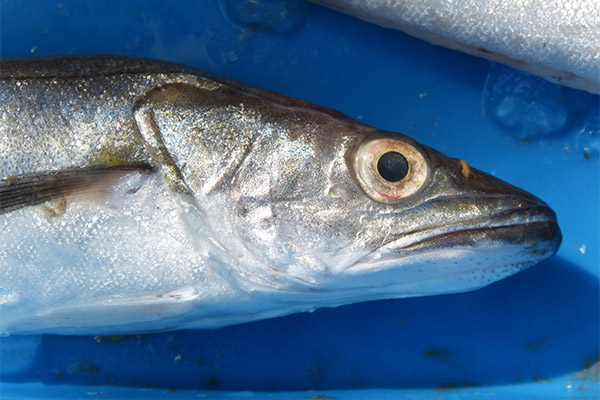
- Hake in any form is most often sold without a head. There are two reasons for this: the first - it’s easy to get hurt on sharp teeth, the second - many buyers do not want to spend money on a large and almost useless head.
- From the swimming bubble of hake, glue and some mixtures used in construction are made.
- The composition of the hake includes folic acid, so this fish is recommended for women planning a pregnancy.
- This fish is one of the most valuable and abundant sources of iodine.
«Important: all information on the site is provided exclusively in fact-finding purposes. Before applying any recommendations, consult with a profile specialist. Neither the editors nor the authors are liable for any possible harm caused materials. "


